The Seebühne, a floating opera stage of bewildering proportions rises every summer from Austria’s Lake Constance, the centerpiece of the annual Bregenzer Festspiele (Bregenz Festival). Across from both Germany and Switzerland, the stage morphs into elaborate dramatic musical productions famous for extraordinary set designs, entertaining audiences of up to 7,000 per night for a month.
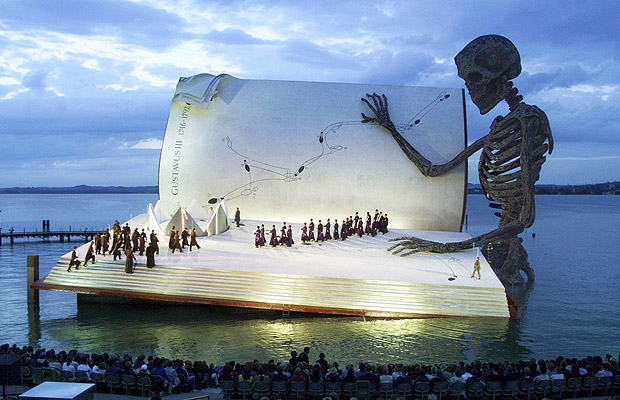

Bewildering Set Design, A Serene Austrian Lake in Summer, Classic Opera Sound and Scene
Giuseppe Verdi’s opera A Masked Ball was produced for Bregenz’s Festival Lake Opera in 1999.
The libretto of the opera is based on a political conspiracy of the assassination of the King Gustav III, the King of Sweden. In 1792, the king was shot while he attended a masked ball and died 13 days later from his wounds. Because of the political sensitivity around the murder the Opera was censored and couldn’t be historically accurate. Verdi’s masked ball is much more of a romantic fantasy, captured well in this opera set with a skeleton watching the dance around a fateful death.
STORY: John Cage: Sonatas and Interludes – A Meditative Journey
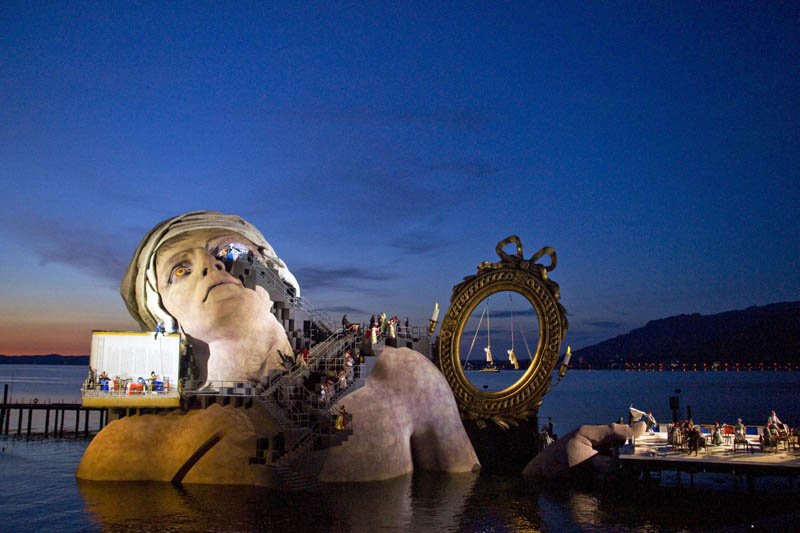

Under the artistic direction of David Pountney, stage designer David Fielding brought the opera André Chénier to life in 2011. Written by Italian composer Umberto Giordano, the opera retells a story of love and death during the French Revolution. One of its heroes, André Marie Chénier (1762 – 1794) the poet of sensual emotive works, an early voice of the Romantic movement. His career was brought to an abrupt end when he was guillotined for alleged “crimes against the state,” three days before the end of the Reign of Terror.
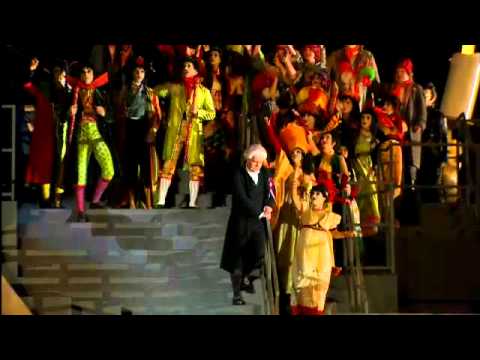
Watch this video on YouTube
The waterproofed set was constructed into Lake Constance, mounted upon a concrete core anchored into the base of the lake, while wooden poles support accessory structures of the stage. Fielding’s design for “André Chénier” was dominated by an oversized face and torso — modeled after the revolutionary Jean-Paul Marat (from the painting by Jaques-Louis David) — from whose left eye streams a series of stairways. An open book to stage right of the figure is frequently highlighted throughout the performance with special lighting effects, ranging from sculptural installations to elaborate gobos that cast shadow scenes along its pages. At water level, a floating platform, ‘carried’ by what appears to be the hand of the statue, moves in response to plot action. Other mobile set pieces rise in and out of the water over the course of the performance.
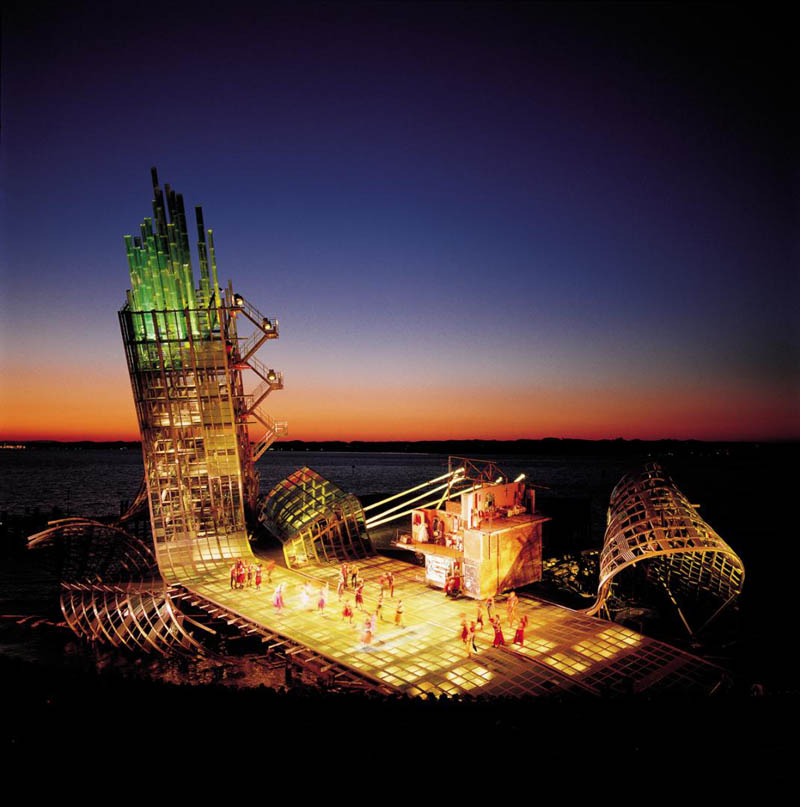

In 2003, what was Alfred Wopmann’s final season as artistic director, the Bregenz Festival staged Leonard Bernstein’s hit musical West Side Story. The musical was directed by Francesca Zambello (US), choreographed by Richard Wherlock, and the stage set designed by George Tsypin.
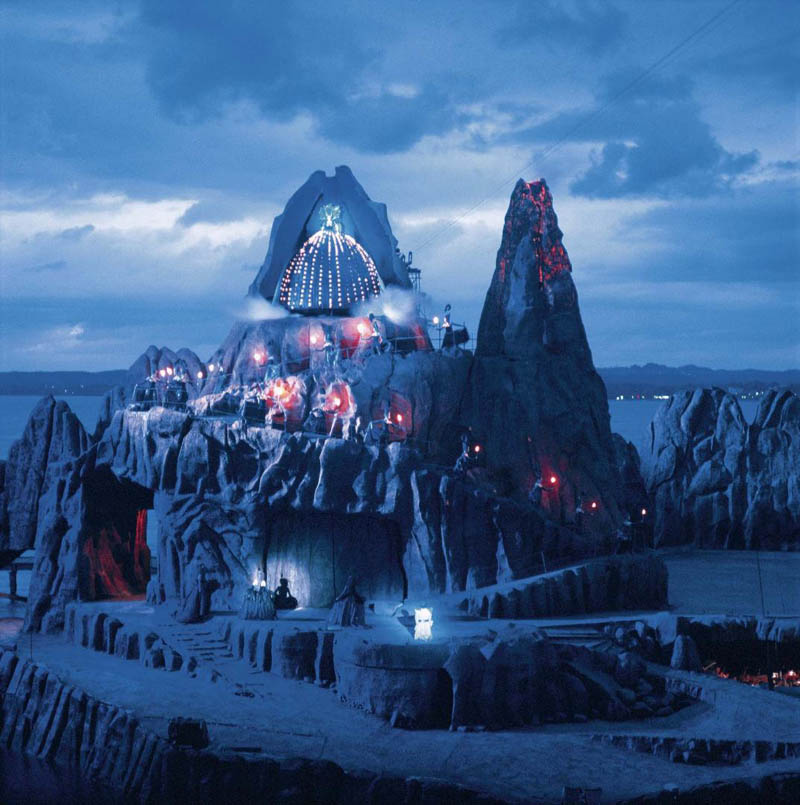

Performed in 1985-1986 and again for 2013, The Magic Flute (German: Die Zauberflöte) is a 1791 opera in two acts by Wolfgang Amadeus Mozart to a German libretto by Emanuel Schikaneder. The work is in the form of a Singspiel, a popular form that included both singing and spoken dialogue.
The Magic Flute is noted for its prominent Masonic elements, as Schikaneder and Mozart were Masons and lodge brothers. The opera is also influenced by Enlightenment philosophy, and can be regarded as an allegory advocating enlightened absolutism. The Queen of the Night represents a dangerous form of obscurantism or, according to some, the anti-Masonic Empress Maria Theresa. Her antagonist Sarastro (who had abducted her daughter Pamina) symbolises the enlightened sovereign who rules according to principles based on reason, wisdom, and nature. The story itself portrays the education of mankind, progressing from chaos through religious superstition to rationalistic enlightenment, by means of trial (Prince Tamino endeavoring to rescue Pamina) and error (his side-kick the bird-catcher, Papageno), ultimately to make “the Earth a heavenly kingdom, and mortals like the gods”. (“Dann ist die Erd’ ein Himmelreich, und Sterbliche den Göttern gleich.” This couplet is sung in the finales to both acts.)
via Laughing Squid and Twisted Sifter
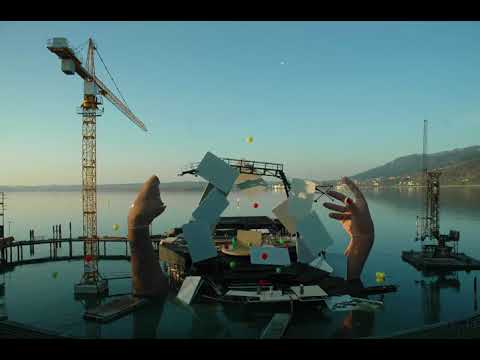
Watch this video on YouTube
Updated 25 July 2021



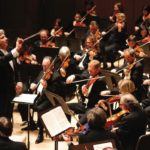

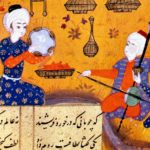
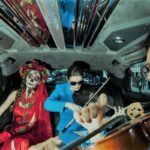


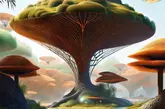
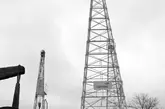
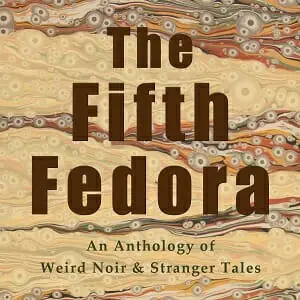

Pingback: Most Famous & Unique Festivals In Europe - Asiana Circus
Pingback: Most Famous & Unique Festivals In Europe - GeekNews
Pingback: Most Famous & Unique Festivals In Europe – ???????????
Pingback: Most Famous & Unique Festivals In Europe - EntertainmentWorld
Pingback: Most Famous & Unique Festivals In Europe - Dinero Cafe
Pingback: Most Famous & Unique Festivals In Europe - Feed Hill
Pingback: Most Well-known & Distinctive Festivals In Europe – Buzzparly
Pingback: Most Famous & Unique Festivals In Europe - PlataKey